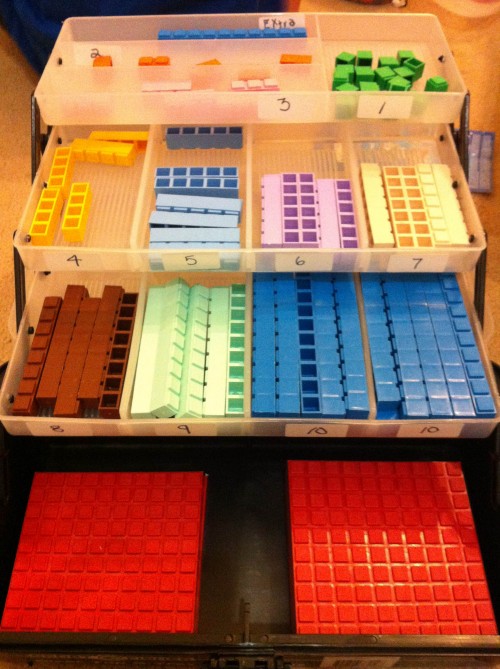 A few years ago my children weren’t using a math curriculum at all. That’s not to say we weren’t doing math, but that I wasn’t using a curriculum to accomplish the task. Instead everything we did was done through games, stories, and hands on applications. My children learned most of the basics and some of the deeper maths as well.
A few years ago my children weren’t using a math curriculum at all. That’s not to say we weren’t doing math, but that I wasn’t using a curriculum to accomplish the task. Instead everything we did was done through games, stories, and hands on applications. My children learned most of the basics and some of the deeper maths as well.
However, when our eldest hit 4th grade we decided it would be good to put him into a math curriculum. There were a few ideas behind that. We wanted to be sure he was at least at grade level, that I hadn’t created gaps. I wanted to be sure he could work through a math text, because if he goes to University he’s going to have to do that.
We tried out Teaching Textbooks which my boys enjoyed. However, my son’s ground in math meant we needed to bump him ahead at least one grade level, but even then it seemed as though he was moving pretty quickly through the math.
So the next year we used Saxon’s middle grade maths. My son loved it and did well with it. The only downside was, even changing how we chose to do the lessons, math was taking about an hour a day. This wasn’t from struggling or tears, but simply from the amount of work provided. I wasn’t totally okay with that because it often meant that something else might not get done in a day.
After chatting with some friends, lots of chatting, and praying we decided in the end to switch to Math U See which would still give our children a well rounded mathematical background, but could be accomplished in considerably less time.
When we left off with my eldest last year in Saxon he was using 6/5. He was thriving in it all though we took a month off when he hit long division so we could become comfortable with it. The month off meant that while it helped him become more comfortable with division, but it also left me feeling like I’d messed up a bit because he had more lessons unfinished in his Saxon book.
So when, after much research, discussion, and prayer, we decided to go with Math U See I gave my kids the placement tests. Interestingly enough you need to be aware that Math U See works on mastery.
In the past I’d always been against mastery thinking a child needed a spiral approach in order not to forget what he’d previously learned. However, the more I considered the mastery approach the more I realized that my child was being taught, without math curriculum, in exactly that way. We picked a topic & stuck with it until he knew how to do it fully. A math curriculum that taught in the same way would be awesome.
A Little Extra Background:
I think that it’s important to understand that because Math U See works on a mastery process their primary and pre-algebra books tackle one operation, or main mathematical theme, at a time.
When my children took the pretests they slipped in exactly where I thought they would based on this thinking. In other words, while my eldest knew how to divide he hadn’t learned everything there was to know about division because Saxon teaches on a spiral approach. Therefore I needed to slip him into the division book knowing he’d race through at least half of it until he reached the point where he’d basically left off in Saxon the year prior.
My younger son, while having memorized nearly all his multiplication facts, needed to slip into the subtraction book because he hasn’t mastered borrowing yet. Again, he’d race through about 3/4 or more of the book and then pick up where he’d left off the year before as well.
The thing to remember with Math U See is that because it works from a mastery approach your child will have a very solid foundation in all forms of subtraction, division, addition, and multiplication before moving into other books. They simply tackle each operation and/or theme in one book at a time.
How I Use It:
One of our main goals this year with our children has been guiding them to more independent learning. Helping them take control of the wheel, to a degree, in tackling their subjects. So once they understood how the Math U See {MUS} program worked I set them the task of putting on their math video each Monday morning.
When I sat with them in the beginning I got them in the habit of answering the questions Mr Demme asks. I also have them pause the video to work things out with the MUS blocks if it’s a “new to them” type lesson. Before moving on to the next video they work on whatever worksheets I’ve assigned for that day. Generally on video day they only work on A sheets. There are sheets labeled A-F for each lesson. They repeat all of this for the next video I’ve assigned for the day.
On Tuesday-Friday they are generally assigned one page from each lesson that we are working on for the week. This may vary as to which pages though, based on the topic being covered for the week. When my son was reviewing all his multiplication facts, for instance, we didn’t fuss too much with the B and C pages. Instead we used the A, D, E, and F pages as those have review of things formerly learned.
If we reach a lesson where I feel my child will need to slow down, we only do one lesson that week taking our time as we work through it. I encourage them to use the manipulative blocks for new concepts until they feel really confident with what they are doing.
If it’s a lesson I don’t feel my student has totally mastered, or I feel they aren’t as confident as they should be, I simply go to the MUS website and print out some worksheets from there for that particular lesson. This usually does the trick and we’re back to moving forward within a few days.
What I Love:
I love that this math program works on mastery. I know that sounds funny if you’ve read this all the way through, but it’s actually been a very wonderful thing for us and I only wish I’d been more open to the idea sooner!
I love that I can go to the MUS website, for free, and print out extra worksheets if I need to. We have needed to a few times and it’s been a wonderful resource.
I love that the boys can do a “lecture” with the video. This is important as we continue to help move our children towards taking ownership of their education. It also gets them in the habit of learning from someone else which is a valuable lesson to learn.
I love that the books aren’t graded, but rather have Greek names. Regardless of age or grade a child can work at their own pace without feeling behind or worrying about a number on the outside of their workbook.
I love that the program uses manipulatives. I have a child who learns best by seeing and touching. This means when he has a small panic about math I often say, “You know they do call this math u see for a reason, let’s get out the blocks!”
I love that there are lessons and unit tests. Now, this is a minor thing, for sure, but I have a child who, like his mother, panics at the thought of a test. By throwing one at him from time to time with his math it allows him to get use to the concept and see that as long as he knows the information or has studied in preparation he’ll be fine.
I love that my kids can do fact family practice on the Math U See website for free as well. The program is built on children knowing their math facts – and knowing them well. While my boys have completely mastered some facts there are always a few that throw them for a loop. It’s very easy to just tell them to pick a set they are struggling with and “go for it.”
What I Don’t Like:
I’m going to be honest here and this will probably only matter & effect those of you living outside of the USA or more importantly living in Australia. However, MUS has changed their policy and will not ship products from the USA to Australia anymore. Their reasoning behind this policy is very simple. Maths Australia carries the products. The downside is that the products from Maths Australia do not compare in price or quality from the ones we can obtain in the USA.
I also wish that their products were available from other mainstream locations such as Book Depository, CBD, or Amazon. For an overseas family that’s a huge help, although when we were capable of ordering their products from the USA we had no issues obtaining them from MUS directly.
The only other minor thing I can possibly mention is that I so wish I had a giant set of the blocks like Mr Demme uses on the video. I think I say this every time I sit in on the kids lessons. My kids say, “Moooooom!” Seriously, his extra large blocks are awesome!
Bottom Line:
Since entering back into the mainstream of math curriculum this is the first one that I’ve had no complaints about how things are taught or of the curriculum itself. I absolutely love the way this program works.
Find Math U See at their site.
~ Written by Kendra, Aussie Pumpkin Patch and originally published October 2013
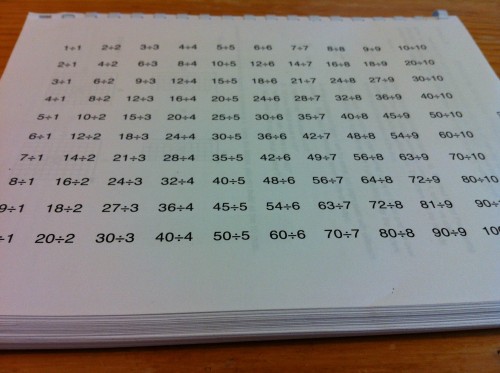
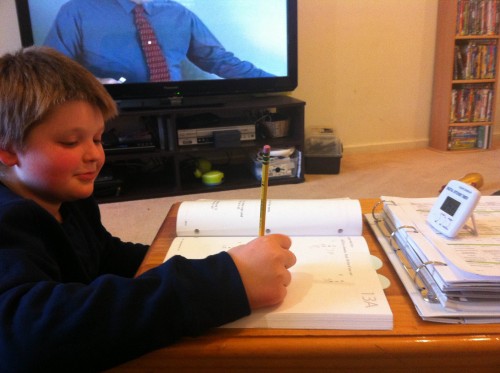
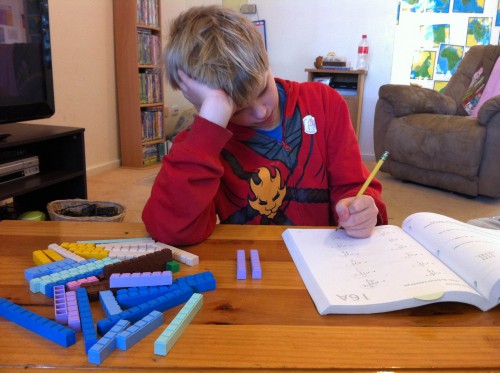
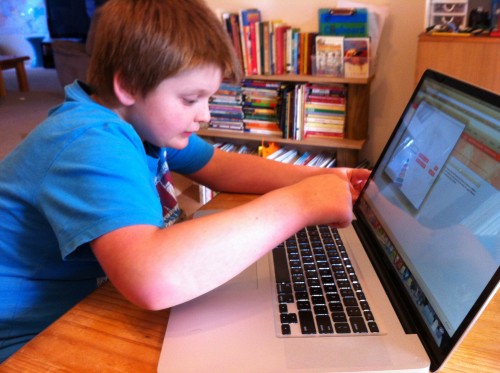
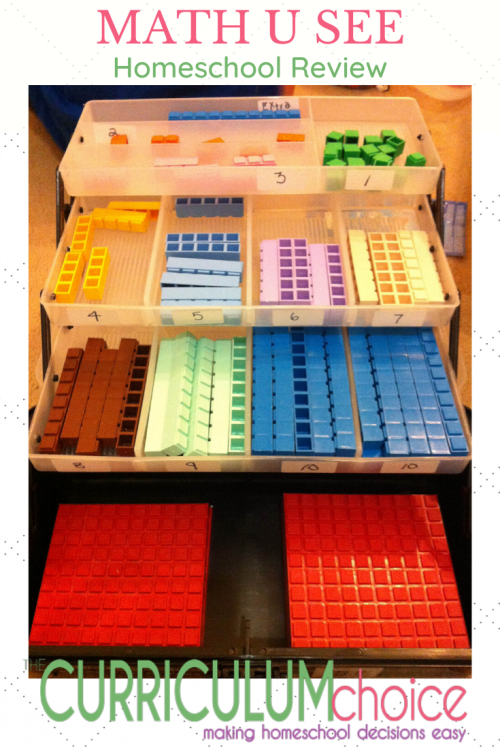

Math is such a big deal and the hardest of curriculums to figure out what works best for your kid. For us the spiral approach really worked for my kid. He likes to move forward but needs to master some of his core math facts (a by product of public school). So this year we are using several math tools to do this. We use a spiral aproach program with DVDs and textbooks. Then everyday he does http://www.xtramath.com for mastery practice only takes him 2 minutes and he does this on his own. Then in the middle of his lessons for the day he does 30 min of Teaching Textbooks. I find that with my kids, giving them math in different forms actually helps them and they don’t even realize they are doing it because I try to find totally different programs to compliment them.
Absolutely, there’s no need to label them . Teachers are number one to label kids , they take away the child’s self worth .
I love MUS too! We have found the lessons to be very straight forward, no frills, and easy to understand. I like that we can go as fast as the kids want to, or ‘park it’ on a concept before moving onto the next lesson. I like the way he teaches the concepts. It’s just very practical. We use a magnetic whiteboard a lot, so it would be very cool to have the blocks magnetized. 😉 But, if that’s all I have to ‘gripe’ about? sheesh.
Nice review! How does MathUSee use the blocks, etc, for say, division problems?
They show you on the video, but you see the division problem written down & pull out blocks. So for example if your problem was 3÷12=? the child would pull out 12 blocks {2 tens & 2 ones} they would then take out the three blocks & lay them upon the 12 blocks to see how many “groups of” 3 are within. They show a couple of ways to do this actually & I let my students pick the way the works best for them & makes the most sense!
I love what you said about the blocks. I would love some of Mr. Demme’s big blocks as well. Great review! My 3 boys love math u see. 🙂
I really like the tackle box you use to store the manipulatives. What brand is it? Where might I find one? ::) Thank you
Hi Kristi,
It’s just a simple 3 tier tackle box from my local K-mart, the labels were ones I cut & put there from normal label sticker paper. 🙂
Hi Kendra
Thanks for the fabulous review about Math U See.
As the Australian distributor of the program, i really value this feedback regarding the quality of the books. I am currently seeing how we can address this.
The books sold in Australia are the Metric Edition of the program, and significantly different in content to the USA books, having Australian relevant content with money and metric measurement. ( and optional teaching of imperial measures and USA money). This is of significance particularly in the lower levels.
As a result of our much lower volume, and subsequent much higher production costs, we are sorry we cannot compete with USA prices at present.
Please note : if you do want the Teachers Magnetic Manipulatives, I am able to order these in for you.
Feel free to email me if you are interested, as they are great !
All the best in your home educating, and in sharing with others about curriculum available.
Esther 🙂
Hi there. Thanks for the review. I am looking for some advice. I am a mother of 3 Autistic children living in South Australia. I am seriously considering buying the MUS set to help my children who have moderate/severe learning disabilities. I do not ‘home school’ but next year, I am planning to deliver some of their curriculum myself, at their schools in a one to one setting. I am thinking MUS may be my ‘go to’ program for teaching maths, particularly for my eldest son who is in a mainstream class but is largely unsupported and greatly struggling with (ie ‘failing’) many subjects including maths. My children are all right brained thinkers and very visual learners. They need to incorporate a multi-sensory approach and need lots of repetition and to be able to work at their own pace. MUS seems to be the best fit I have found, HOWEVER, I am now concerned that the Australian program from Maths Australia will not be as good as the program I have seen on the MUS website (US based). I noticed that the program is nearly twice the price here, and your comment that the quality is not of the same standard has me concerned. I could still buy the US program by having a relative send it to me, but I’m worried that it wont be fitting due to lack of Australian content (metric system, money system, etc). Should I bypass the MUS system and try something else (I was also considering Time4Learning) or is MUS still a great choice? And if MUS is still recommended, which version should I buy, US or Aussie?
Hannah, the US MUS will not sell to people outside of the USA anymore. So you’ll have to purchase from MUS Australia. The products are identical except that many of the measurement problems are metric based for the children.
I had heard about the poor quality too, but our Aussie book is fine aside from the binding. I did lodge a complaint about the binding & they asked for suggestions. The binding is currently thin wire binding that is “clamped” in the middle. I found that it did not hold up to even a matter of weeks! It was permitting pages to slip out. I removed the binding entirely & hand fed through plastic black coil binding & haven’t had another issue since.
I recently was in touch with MUS Australia & they will even do special printing jobs if your child needed their book printed on special paper, bound for a lefty, etc. 🙂
Hi, I’ve been looking for a tackle box to store my math u see pieces in. What size did you get?
There was only one size at my local shop when I picked it up.. I’m not sure of the specific dimensions, but if it helps any it was not small or large, so I’d say average sized?
Hi Kendra. Just wanted to check back in here – we’ve been making a lot of improvements to the Aus version of Math U See. Part of teaching a program is also having the confidence to know that you’re teaching it in the most effective way (especially for parents with limited or no formal training), so we’ve been improving our member resources and video tutorials. Obviously, we’ve replaced the binding. We’ve also now converted all our videos to an online portal (so there’s no scratching of DVDs or needing a DVD player) and users can ask questions directly and get video replies and tutorials addressing problems specific to Australian parents.
Again, I really appreciate the review, feedback and open discussion about how we can help support Aussie parents 😊
Esther – Maths Australia
That’s fantastic to hear Esther!